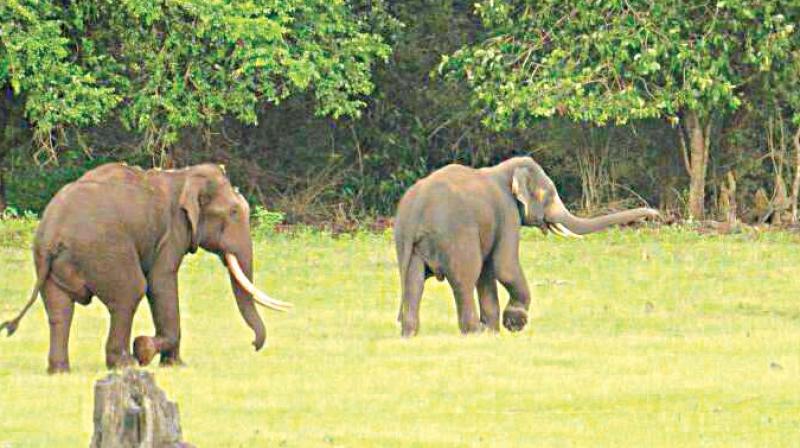Karnataka: Watch the dung to get the jumbo numbers

Chikkamagaluru: Wildlife scientists are hoping monitoring and marking of elephant dung piles will give them an estimation of the population of the jumbos in the tiger reserves of Bhadra, Bandipur, Rajiv Gandhi National Park, Bilirangaswamy and Bannerghatta.
Begun in November last year by Prof. Raman Sukumar of the Centre for Ecological Sciences, Indian Institute of Science, Bengaluru, and Mr Surendra Varma of the Asian Nature Conservation Foundation in the city, in association with the forest department, the study will continue till April before the elephant census starts in May.
Mr Varma explains that an examination of dung density, elephant defecation rate and dung decay rate can give an indirect estimate of the elephant population in a given area.
"As only fresh dung piles are marked the elephants need to be followed until they defecate, or we need to locate and mark dung piles that are less than a day old. Even the location of fresh dung markings are GPS recorded and each dung pile marked is assigned a unique code," he added.
As elephants usually defecate 16 to 18 times day, 15 fresh dung piles are marked by the forest staff in each division at intervals of 20 days each. The researchers have laid down strict guidelines for the staff to follow during the experiment so they can get as accurate an estimation of the elephant population in these divisions as possible.
Director of Project Elephant, Dilip Kumar Das, meanwhile, said the elephant census was scheduled to be held in May and the dates would be announced after approval from the Centre.

